Sharlyn J. Lauby's Blog, page 11
March 9, 2025
5 Ways Employees Can Stay Relevant In Their Career
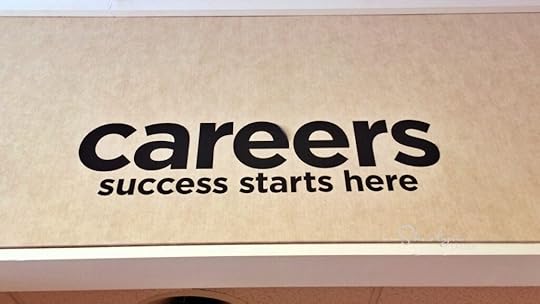
Estimated reading time: 3 minutes
I read an article recently from Lolly Daskal titled “AI Will Replace You: Leaders Who Refuse to Evolve Will Be Left Behind”. It’s a good read worth checking out. Here on HR Bartender, we’ve been talking about artificial intelligence (AI) a lot lately. And I’ve suggested that people should start doing little experiments to learn more about AI and its capabilities.
Today, I first want to add my support to Daskal’s article. Employees who refuse to evolve will be left behind. Period. Obviously, if your company, industry, job is adopting AI at a rapid pace, then learning AI is important to your career. And even if your role doesn’t have a lot of exposure to AI right now, it might be worth it to learn more about AI.
But artificial intelligence isn’t the only thing that keeps an employee relevant. The business world is changing, and we need to stay up to date on everything that’s happening.
Stay on top of industry trends and customer needs. What’s happening in your industry? What do customers want? Is your organization making changes to their products and/or services? The answers to these questions will have a direct bearing on your role and the things you work on. Think about the knowledge, skills, and abilities (KSAs) for your job. If you haven’t done it lately, it might be interesting to review your job description. Are you doing what it says you should be doing? Are there aspects to the job that you’d like to learn more about? This could be helpful in developing career-related goals. Make sure your goals align with the company’s goals. Many organizations use the concept of cascading goals. The company’s goals become the department’s goals which become the manager’s goals … which become the employee’s goals. Employees will want the KSAs in their job description to align with what the organization is trying to accomplish. Set career related goals for yourself. I’m going to assume that the company has goals they would like an employee to accomplish. This doesn’t mean employees shouldn’t set a few goals for themselves. I’m not suggesting that employees overwhelm themselves with extra activities but maybe there’s a book you’ve been meaning to read or a podcast you’ve been wanting to listen to. Find time for yourself. Develop a reputation for sharing good information online and in-person. I’m going to combine curation and networking here. Both are valuable for your career. Some days we’re able to have more in-person conversations and other days, we spend more time online. When you’re sharing content – whether it’s in-person or online, make sure it’s accurate and helpful.There are new trends and technologies – like artificial intelligence – impacting business all the time. That’s not going to change. Employees need to think about how to stay relevant not just in the context of AI but other developments like analytics, cybersecurity, and sustainability (just to name a few).
I want to believe that organizations are thinking about how to keep their employees relevant. Because staying relevant provides a competitive advantage. However, I also believe that employees should share in the responsibility of staying current. Think of staying relevant as a partnership that will benefit both the employee and the organization.
Image captured by Sharlyn Lauby while exploring the streets of Orlando, FL
The post 5 Ways Employees Can Stay Relevant In Their Career appeared first on hr bartender.
March 4, 2025
Employee Performance Conversations: Remember to Follow Up
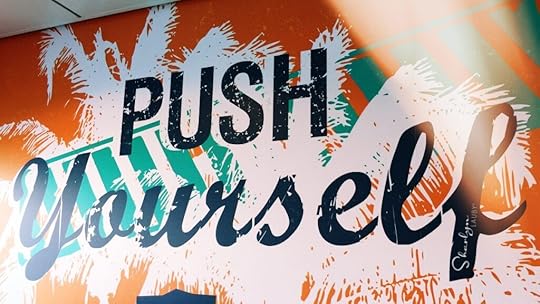
Estimated reading time: 3 minutes
We’ve talked in the past about how to have a performance improvement conversation with an employee. It’s definitely an important conversation. But there’s another performance related conversation that’s equally important – the follow-up meeting afterward.
Performance conversations should end with a date and time for follow-up. The purpose of the conversation is to let the employee know that they’re improving (or not improving) in the area that was previously discussed. If the employee isn’t improving, it’s possible that disciplinary action might be necessary. This is something to discuss with human resources.
Today, I want to focus on the conversation that should happen when the employee’s performance is improving. Managers might be tempted to simply say to themselves, “Hey – performance is better. My work is done.” The reality is … managers who do that are missing out on an opportunity.
First, they’re missing out on an opportunity to tell the employee that they’re doing a good job. And second, they’re missing out on the chance to hear how the employee did it. Understanding how an employee overcame a challenge is valuable information that might be helpful in the future.
Here are some steps for a follow-up performance conversation.
Start by establishing the purpose of the discussion. Managers and employees have many conversations. This should not be added on to a one-on-one meeting or some other discussion. Set aside dedicated time to follow-up regarding the previous performance conversation.
Describe the positive behavior or performance. Tell the employee what you’ve witnessed. I’m not anti “good job” but this is the time to be specific. Employees will appreciate knowing that their manager has been paying attention.
Explain the importance of the behavior. Remind employees why this behavior is important to the team and the organization. I’m sure it was discussed during the original performance conversation, but making the connection between an employee’s work and the organization helps with engagement.
Ask the employee for the reasons for their success. Get the employee to share how they did it – meaning how they improved their performance. It’s possible the manager will learn something new that they might be able to share with others. Or maybe even use when they need to make a change themselves.
Listen actively and empathically. Changing performance isn’t easy. Part of this meeting is to acknowledge the employee’s hard work. Managers should be attentive and listen well. Don’t forget what it was like when you’ve had to work hard to create improvements.
Thank the employee and express your confidence in their continued performance. Wrap up the meeting by thanking the employee for their efforts and encourage them to continue to improve. The manager should let the employee know that they are available to support them.
I’ve said it before – “no news is good news” isn’t a performance management philosophy. When employees are doing good work, managers need to tell them. If the only time managers chat with employees is when they’re doing something wrong, well … employees just won’t want to speak with their manager. Create an environment where positive performance is regularly discussed.
Image captured by Sharlyn Lauby off the coast of Miami, FL
The post Employee Performance Conversations: Remember to Follow Up appeared first on hr bartender.
March 2, 2025
How to Manage Extra Time Commitments

Estimated reading time: 4 minutes
LinkedIn News recently published a survey that said one third of U.S. employees have at least one side hustle. It could be working part time, running a small business, driving for a rideshare app, etc. In the article, they were asking for input on how people make time for a side hustle when working full-time.
It’s a valid question but I would expand on it. In addition to side hustles, people attend school. They decide to earn a license or credential. Some individuals have large caregiving responsibilities. Maybe an employee has taken on a volunteer role that demands a lot of time. Honestly, as I’m typing this … extra time commitments could also involve taking on an extra project at work in addition to our regular work. For example, working on a special project in addition to your normal job.
So, the question really becomes how can a person work full-time and still do something additional that has a large time commitment – and do it well? Here are a few things to keep in mind before taking on those large time commitments:
Determine if the commitment is temporary or permanent. Sometimes, we might take on an extra commitment for a few weeks or months knowing that it will end at some point. Other times, we have to take on an extra commitment indefinitely. Obviously, the considerations for taking on a temporary commitment could be different compared to a more permanent one.
Try to find out how much time is involved. I think one of the reasons that people are often unsuccessful with extra commitments is because they didn’t do their homework. I recently spoke with someone who was starting a new job, going to school, and trying to get their HR certification at the same time. I’m not saying it can’t be done but that’s definitely tough and will require a huge amount of discipline.
Discuss the commitment with family and friends. When I’ve taken on big projects / commitments, Mr. Bartender and I discuss it first. That way, if I have to work late or miss an event, we both know why. It’s tough to miss out on family events, birthdays, holidays, etc. but discussing it before taking on the commitment can allow people to talk through what’s truly important.
See if there are aspects of the time commitment that are negotiable. This kinda ties into the last point about discussing the commitment with family and friends. Maybe there’s an important event coming up that you want / need to be a part of. Can you talk with your side gig and say, “I’m happy to do this but I need to know that I can have off for this event?” Or “I’m happy to work on this provided I’m able to keep Friday nights with my family.” Now, the answer could be no to these requests, but you would know that in advance and can decide accordingly about your participation.
Regularly evaluate the value of extra commitments. I will admit that there are some extra commitments we can’t calculate the ROI on, like caregiving. But there are many we can. This doesn’t mean that we should drop them. It does mean to make sure that whatever time you’re giving to something that you’re getting what you want out of it – money, learning, relationships, etc.
Many people work full-time jobs and do other things. They do it because it brings them something they want or need. Managing an extra time commitment takes planning and discipline because whatever we do, we want to do it well.
Image captured by Sharlyn Lauby while exploring the streets of Honolulu, HI
The post How to Manage Extra Time Commitments appeared first on hr bartender.
February 27, 2025
Understand Employee Feedback Better Using a Johari Window

Estimated reading time: 3 minutes
We talk about feedback all the time. Managers give employees feedback. Employees give the company feedback. We talk about the importance of feedback but sometimes I feel that we don’t spend enough time talking about the feedback we can give ourselves.
The Johari Window was developed in 1955 by Joseph Luft and Harrington Ingham to help people understand themselves and their relationships with others. Here’s how it works.
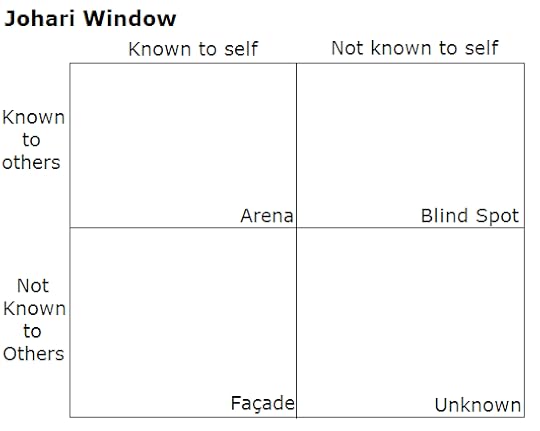
The Johari Window has two axis and four quadrants. The two axis are self and other. The four quadrants are public, blind, private, and potential.
Information known by me and others is called public or arena.Information known to others and unknown to me is referred to as blind or blind spot.Information I know but you don’t is private or facadeInformation unknown to both of us is called potential or simply unknown.The Johari Window is a dynamic model, meaning we can change the size of the quadrants as our relationships change. For example, an employee might decide to tell their manager about a challenge they’re having. That moves the information from private to public. A manager might share with an employee some positive feedback about the way they handled an assignment. That moves information from blind (to the employee) to public.
Another example could be the organization has an emergency and employees (at every level) face new situations they’ve never encountered before. Employees might discover things about themselves they didn’t know before. Information might move from the potential quadrant to public.
I’m reminded of this when I think about my work experience at the airline. During the time I worked there, we experienced a crash. There were some people in the organization who had been identified as emergency responders who were not prepared for the emotional toll this type of emergency can have. And there were others who were better prepared. My point here isn’t that airline crashes aren’t devasting events. It’s that we didn’t know how people would react to that type of emergency until we were actually in the emergency.
What I appreciate about the Johari Window is that individuals can use it to do a self-assessment. What knowledge, skills, and abilities (KSAs) would you include in your public window? What would you include in your private window? Employees might have a strength or something they would like to do and need to move that information from the private window to a public one (as in, tell their manager).
Managers can also use the Johari Window when discussing performance with employees. Do employees know what their strengths and weaknesses are? What type of feedback can managers give to employees to help them understand what they see in terms of performance? An employee might not recognize a strength until someone points it out (i.e., moving that information from the blind quadrant to public).
You’ve heard me say many times that “no news is good news” isn’t a communication strategy. Models like the Johari Window might help individuals identify topics that they would like to discuss. And that’s the whole purpose of feedback – to bring conversations into the open.
Image captured by Sharlyn Lauby after speaking at the Flora Icelandic HR Management Conference in Reykjavik, Iceland
The post Understand Employee Feedback Better Using a Johari Window appeared first on hr bartender.
February 25, 2025
The Best Way to Conduct a Minimum Wage Audit

Estimated reading time: 5 minutes
(Editor’s Note: Today’s article is brought to you by our friends at Poster Guard® Poster Compliance Service , the leading labor law poster service that gets your business up to date with all required federal, state, and local labor law postings, and then keeps it that way — for an entire year. Enjoy the article!)
In the United States, the federal minimum wage has been $7.25/hour since July 2009. Since then, there have been a lot of changes to the minimum wage on a state and local level. Currently, 34 states, territories, and districts have a minimum wage higher than federal law.
Honestly, I don’t expect this trend to change anytime soon. For example, in my state (Florida), the minimum wage is scheduled to increase incrementally until it reaches $15/hour in September 2026. So, changes are regularly happening.
Organizations need to understand what’s going on with minimum wage because if there’s a difference in minimum wage laws, employers are required to pay the most generous rate to non-exempt workers. For example, if I’m a non-exempt employee working in Denver, Colorado, how much should I get paid per hour?
Federal minimum wage $7.25/hourColorado minimum wage $14.81/hourDenver minimum wage $18.81/hourAlright, this was an easy one, the correct answer is $18.81/hour. And remember that this applies to overtime pay as well.
I want to believe that organizations know when they’re required to pay more than federal minimum wage. But with all the changes going on, organizations need to ask themselves if they have a process in place to make sure they stay current with all these wage changes. Especially if the organization has employees who work in other cities / states.
Keep in mind, if an employee relocates, their rate of pay might change. If we use the non-exempt Colorado employee example above, let’s say the employee has been living in Telluride and relocates to Denver. Organizations could be certain they’re paying someone more than $7.25/hour. But if the employee is making $15/hour, did the organization know they should be making $18.81/hour?
That’s why it is valuable to conduct a minimum wage audit. This audit would be focused exclusively on minimum wage. Organizations might be doing other compensation related audits for reasons like evaluating pay equity or verifying exempt / non-exempt status under the Fair Labor Standards Act (FLSA). Those are valid reasons to audit compensation and while they might factor into this conversation, let’s just focus on minimum wage for now.
Here are three steps to consider when conducting an effective audit:
Identify a reliable source for minimum wage information. Our friends at Poster Guard have developed a Minimum Wage MonitorTM Premium Service. This online tool provides organizations with a color-coded map that displays minimum wage data, in addition to past and future wage rates. This could be very helpful for future workforce planning and budgeting purposes. The tool sends email notifications whenever minimum wage laws are passed or changed so organizations can start preparing for the new rates to take effect.Examine employee wages in relation to the law and your internal compensation practices. Once an organization has partnered with a reliable information source, you can start conducting their wage analysis. This isn’t simply a question of “are we or aren’t we” paying more than minimum wage. Employees know what the minimum wage is, and they don’t have to talk to someone in the breakroom to figure out if they’re not being paid fairly. Oh, and I don’t want to get off-track, but if your state/territory/district requires pay transparency in recruitment marketing, then you’ll want to ensure that you’re disclosing the correct pay rate. Determine if there are “pay gaps” that need to be addressed. Organizations must remember that they’re not just evaluating new employee pay. Wage changes can create other challenges, like wage compression. As a quick refresher, wage compression happens when a new employee is paid nearly the same amount as another employee with longer tenure. An example would be if an employer hires a new customer service representative at $15/hour, but a customer service rep with 5 years of service is making $15.50/hour. The organization will need to find the budget dollars, put together a wage adjustment schedule, and plan to speak with employees about getting their pay on track.As I mentioned earlier, it’s possible that the results of a minimum wage audit need to be considered with other compensation related audits. Of course, if organizations have any questions along the way, they shouldn’t hesitate to consult with legal counsel.

One more thing. We spent our time today talking about minimum wage changes from the perspective of employee pay. This is a good reminder that most – but not all – of these changes require new labor law posters. Don’t forget that Poster Guard’s Poster Compliance Service keeps you in compliance by providing automatic replacements (at no additional cost) every time a mandatory change occurs.
The last thing any organization wants is to be considered “out of touch” because they don’t know what the current minimum wage is for employees. Beyond appearing to be clueless, companies can’t afford to risk the potential wage and hour or FLSA lawsuits from their employees. Get reliable information so you can pay employees properly.
The post The Best Way to Conduct a Minimum Wage Audit appeared first on hr bartender.
February 23, 2025
Organizations Should Identify Their Artificial Intelligence Goals
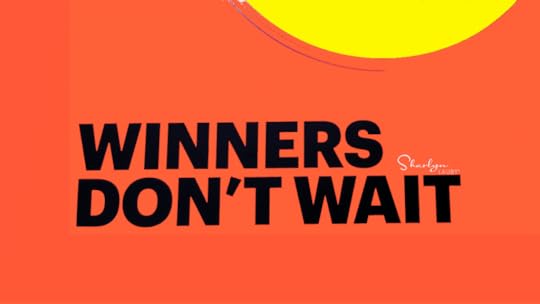
Estimated reading time: 4 minutes
I recently came across an interesting research paper titled “Technological Disruption in the Labor Market” from the National Bureau of Economic Research based in Cambridge, Massachusetts. The paper was prepared for the 2024 Aspen Economic Study Group annual meeting, and it discusses the relationship between technological disruption and the labor market. It’s an interesting read but I will also forewarn you, it’s a research paper and reads like a research paper.
Obviously, when discussing the concept of technological disruption, the focus was on artificial intelligence (AI). There’s been a lot of talk about AI replacing workers and taking jobs. And that’s what attracted me to this paper. I wanted to see some research about the subject. Not just a “I think, or I feel that AI is gonna do this …”
The section of the paper that I found particularly interesting was the discussion around what it takes for a technology to be classified as disruptive. The paper says that disruptive technologies need to be what are called GPTs (general purpose technologies). A GPT is defined as a technology that “can affect an entire economy whether that’s a national or global level”. Examples of GPTs include electricity, automobiles, airplanes, computers, and the internet. So GPTs can be products, processes, or a system.
In the paper, the authors talk about the criteria for being identified a GPT and how that relates to the labor market.
Predictions and decision making. Many people think of AI as being predictive. I mentioned this in a recent article about using AI to predict what would be “in and out” in business and pop culture. Since most jobs include some level of predictions and decision making, is it possible that AI will have a role to play in most of our work?
Productivity. The answer to the question about predictions and decision making might rest in whether the results of those predictions and decisions increase productivity. We saw this in my little AI what’s in and out experiment. In some places, AI was spot on and in other places … way off the mark. So, did the accurate predictions benefit the organization? Or did the poor predictions hurt the company?
Demand for products and services. While productivity is a good thing, increased productivity needs to translate to the bottom line. The example used in the paper is agriculture. Farmers became productive with the adoption of agricultural tools (also known as GPTs). They produced tons of food. But people only need so much food … so did it translate to increased profits or excess waste?
The purpose of this discussion isn’t to tell organizations whether their artificial intelligence adoption strategy is good or bad. But I think it’s worth an internal conversation about what’s the business goal. Maybe a better way of saying it is what are the first level, second level, and trierarchy level goals? Today, organizations might say that AI helps them to make better decisions but ultimately, it will help us deliver a better bottom line.
What does this have to do with the labor market? Everything. The organization’s AI goals are going to drive what their workforce plan looks like. It’s going to identify the knowledge, skills, and abilities (KSAs) that the organization needs to be successful. It will show the organization where their skills gaps are so they can put plans in place to upskill and reskill employees.
Yes, it’s important to have an artificial intelligence policy. It’s equally important to have an artificial intelligence strategy including measurable goals.
Image captured by Sharlyn Lauby while exploring the streets of Denver, CO
The post Organizations Should Identify Their Artificial Intelligence Goals appeared first on hr bartender.
February 20, 2025
How to Create an Evening Routine

Estimated reading time: 4 minutes
I recently published an article on how to create a morning routine. It occurred to me afterward that having an evening routine is equally important. How we wind down at the end of the day can impact our sleep and subsequently how we start the next day. Good evening routines lead to good mornings and so on …
Some of the activities that are part of a morning routine could also be part of an evening routine. For example, including an element of fun. However, there are a few other things to consider. Here’s a list of activities to think about when trying to create or improve an evening routine.
Consider journaling. In older articles, I’ve talked about journaling to express gratitude and record your accomplishments. Journaling could be a great way to let go of any “stuff” from the day and enjoy the rest of your evening.
Figure out how much sleep you need. This is going to vary by person, but all of us should know how much sleep we need to be our best the next day. Are you going to get that amount every single night? Probably not. But should we try to get that amount on a regular basis? Yes, we should.
Understand your ideal sleep environment. Personally, I think this is one of the reasons that people say they never sleep the same when they’re traveling. Because at home, they have their ideal sleep environment – the room is the right temperature, the bed and bedding are exactly the way they like it, and the ambient noise is something they’ve become used to. Take time to understand your ideal sleep environment.
Evaluate if using a sleep tracker makes sense. Sleep tracking is quite popular right now, whether it’s using an electronic device or just a page in your journal. It’s possible that if we track our sleep, we might learn a few things about ourselves that would be helpful in creating the right sleep environment.
Think about evening beverages. I’m going to lump all the beverages into one category – caffeinated, alcoholic, etc. Again, every person is different but knowing how beverages affect your sleep is important and something to consider. I love a cuppa tea before bed, and it really helps me relax. But I’m careful not to drink anything caffeinated.
Decide how much screen time you want before bed. I try not to look at the news before bed. It will be there in the morning. But I’m totally fine with playing an online game – usually one that’s not very competitive. Right now, I’m trying out one called Japanese Rural Life Adventure where I’m fixing up an old house, growing my own crops, and being self-sufficient with my dog, cat, and chicken. It’s very low key and I don’t find it interrupts my sleep.
Determine if you want to include any physical activity. Typically, I exercise in the morning but sometimes, I like doing some light stretching before bed. Everyone is different so decide what works best for you and helps you sleep well, and wake refreshed.
Take care of yourself. I mentioned in the morning routine article that I’m not into big elaborate skincare rituals. I do try to use some sort of night cream / moisturizer both in the morning and evening. I find it to be beneficial. Oh, and this brings up one more thing. I’m very careful about scented products because I want the scent to be something I can tolerate all night. In fact, let me take it one step further, I want any scent I’m wearing while I’m sleeping to be something I love.
Find something fun to end the day. It might be doing a puzzle or reading a book or something completely different. Maybe listening to a favorite song. Ending your day with a fun activity can clear your head and help you have a good night’s sleep.
Remember there will be days when you can’t do it all. When I’m traveling, I don’t get to do all these things. Sometimes, when Mr. Bartender and I go out to a movie or show in the evening, I don’t get to do all these things. That’s okay. I focus on the ones I feel are most important to helping me sleep well and enjoy my full evening routine the next night.
I hope this list is a reminder that getting a good night’s sleep matters. According to the Centers for Disease Control (CDC), adults do not get enough good sleep. A lack of sleep can impact our work and our relationships. One thing that can help us get better sleep is to think about our evening routine and the activities we can do to make it better.
Image captured by Sharlyn Lauby while exploring the streets of Honolulu, HI
The post How to Create an Evening Routine appeared first on hr bartender.
February 18, 2025
Expectancy Theory Can Help Explain Employee Motivation

Estimated reading time: 4 minutes
I keep seeing these conversations about “employees just don’t want to work anymore” or “employees don’t work hard enough”. I thought we had moved past such comments but obviously we haven’t. So, it might be helpful to use a relatively well-known theory to help explain what might be happening.
Expectancy theory (also known as Vroom’s Theory) basically says there are three aspects to employee motivation: valence, expectancy, and instrumentality.
The first component is expectancy, which is the belief that the performance / goal is attainable. Think of it as self-efficacy – “I can do this.” If an employee feels that the task or job isn’t attainable, then they might not be motivated to do it. Please note, I’m not saying that the task or job needs to be easy. Many people are willing to take on challenging goals and work hard to accomplish them. But they also must feel that they can do it.
The second component is instrumentality. This is the belief that if a person does the work and accomplishes the goal that they will be rewarded. If the organization expects employees to work hard but doesn’t offer any type of recognition, acknowledgement, or reward … then some employees might say, “it’s not worth going the extra mile”.
The third component and dare I say the most important one is valence. This is related to the value that an employee places on the reward. So, if the reward is something of value, then employees would be very motivated to accomplish the task or goal. If the reward isn’t of great value, then employees might not be motivated.
Here are a few examples to illustrate expectancy theory and employee motivation:
A high performing employee meets with their manager. The manager says, “You’re doing a great job. Keep up the good work and you’ll make supervisor in no time.” Great, except the employee doesn’t want to be a supervisor. They like their current role and are perfectly happy staying right where they are. The manager might think they are motivating the employee when in reality, they are doing the exact opposite. A high performing employee is consistently going above and beyond in their assignments. During their performance review, their manager gives them a rating of “meets standard” because they don’t want to be accused of playing favorites and the employee gets the same increase as everyone else. Again, the manager thinks they’re doing the right thing by giving everyone the same thing, but they missed the mark by not recognizing the employee’s excellent work. A high performing employee who wants a promotion works at a company that hasn’t had a supervisor opening for the past five years. Sadly, the employee’s current supervisor isn’t offering any support or advice. Here’s an employee who does great work and values the potential reward, but there are no opportunities available, and the manager isn’t offering any other type of recognition or reward in its place. Last example, and this one shows up regularly in the office meme and joke category. Organization asks employees to work hard so the company can make their quarterly sales goal. And the employees really deliver! The CEO says, “Great job! We exceed goal by $$ millions. Here’s a slice of pizza.” I like to believe that I don’t have to explain this one. Employees might think twice the next time they’re asked to go the extra mile. While the employees like pizza, the expected reward isn’t valuable in the context of the work.I don’t know that it’s necessary to cite Vroom Theory by name at your next manager’s meeting. But it could be helpful to talk about the relationship between employee motivation and expectancy. Employees need to be trained so they feel they can do the work. When employees perform well, they should be recognized and rewarded. And the recognition and rewards need to be valuable to the employee.
Image captured by Sharlyn Lauby while exploring the streets of Gainesville, FL
The post Expectancy Theory Can Help Explain Employee Motivation appeared first on hr bartender.
February 16, 2025
HR Pros: Here is a Single Site to Monitor Government Changes

Estimated reading time: 2 minutes
When there’s a change in the presidency, there are government changes as well. This has been going on for centuries. However, I will admit, there are a lot of changes happening right now. I know I’ve said to myself more than once how it would be wonderful to have one place to monitor what’s going on.
If you’re also looking for that one site to help you stay current with what’s happening … let me share a site to check out. Our friends at Foley & Lardner LLP have set up a site called “100 Days and Beyond: A Presidential Transition Hub”. This site includes:
Key policy and regulatory changes that might impact your industry and organization.Personnel transitions, including key appointments and their implications.The changing geopolitical landscape and how political dynamics could shape trade, tariffs, and supply chains.Check out the site and if you like what you’re reading, you can sign up for a weekly update email that will give you the latest government changes. I’ve received a couple of emails so far and really like the format. The email is organized in sections. For example, there’s a section on labor and employment so I can focus on that section. There’s also a section dedicated to the executive orders that have been signed over the past week.
As an HR pro, I’ve always said that just because I can do something that doesn’t always mean I should do it. This is a perfect example. Can I look up all these laws on my own? Yes, I can. Is that the best use of my time? Probably not. The legal team at Foley is doing it for us. And you can send articles to your executive team as you see necessary.
Organizations are going to want to stay on top of all the changes happening right now. This information on government changes will be necessary to run a successful (and profitable) operation. Finding good, reliable information sources will be the key. I hope this one will work out well for you too.
Image captured by Sharlyn Lauby while exploring the Library of Congress in Washington, DC
The post HR Pros: Here is a Single Site to Monitor Government Changes appeared first on hr bartender.
February 13, 2025
Think About the Right Way to Offer Advice at Work
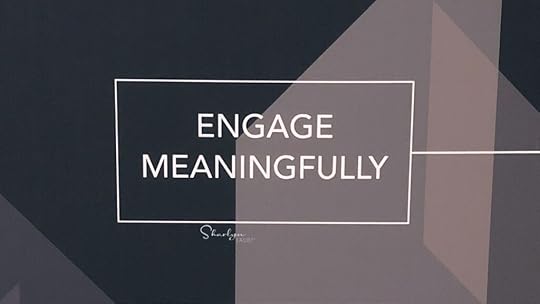
Estimated reading time: 3 minutes
I saw a post from a Facebook friend recently asking for advice. Several people weighed in on the friend’s question and gave recommendations. After the commenting quieted down, the friend announced that they were disregarding all the advice they received. Which is totally fine.
It reminded me of a comment I heard in a training session once that “sometimes people don’t want your advice, they just want you to listen”. In the case of my Facebook friend, sometimes people don’t really want your advice even when they ask for it.
This applies in the workplace too. As a manager, we might see a member of the team struggling. It could be related to work and performance, but it could also be personal. Maybe it’s a situation that you’ve experienced in your career, and you know exactly how to fix whatever is bothering the employee. As tempting as it might be to jump in and offer some advice, maybe we need to wait until the right moment to offer advice or assistance.
When you see an employee struggling and want to help, think about the opportunities you have available.
One-on-one meetings. Are you conducting regular one-on-one meetings? How are they going? Have they turned into a session where “the manager talks and the employee listens”? With a new year, this might be a great time to do a refresh and/or reset on your one-on-one meetings to encourage employee feedback and discussion. This is a good idea even when you’re not dealing with a struggling team member. You don’t want one-on-one meetings to become stale and unproductive.
Employee Assistance Programs (EAP). Human resources should be regularly promoting the organization’s wellness and wellbeing programs, including EAPs. If they’re not, remind them that it would be helpful. You don’t have to get into employee specifics. And if HR is doing regular reminders, think about whether it makes sense to do a quick mention during a staff meeting. “I’m not sure if everyone saw this but HR sent out some information recently about our company wellbeing program. Please check it out when you have a moment. It’s a valuable benefit.”
Performance coaching. If an employee is struggling and it’s impacting their performance, it is possible that the manager will have to address it. Managers might be uncomfortable doing this, especially if they don’t have prior experience. HR departments can help managers discuss performance coaching. If the organization has a performance coaching training session, consider attending. Asking questions about coaching employees who are struggling with a personal matter is a perfect discussion for this topic. If you recently attended a training session and didn’t ask this question … connect with the instructor and ask.
And let me add, if you’re the person struggling right now and trying to figure out next steps, use the activities I’ve mentioned above to find what works for you. Talk to your manager or human resources. Take a training program that will offer insights. Look at your employee benefits to see what options are available.
I understand that sometimes we struggle with a problem and figure out on our own how to address it. That’s great. Then there are times when we might need the help of someone else – a manager, mentor, coach, or human resources. Use your resources. That’s why they’re there. And when you’re ready for some guidance, suggestions, or advice – just ask. You can take the advice or completely ignore it. Both options are totally acceptable.
Image captured by Sharlyn Lauby while exploring the streets of Salt Lake City, UT
The post Think About the Right Way to Offer Advice at Work appeared first on hr bartender.
Sharlyn J. Lauby's Blog
- Sharlyn J. Lauby's profile
- 10 followers



